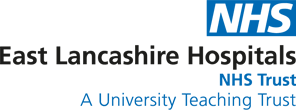What is rotator cuff related shoulder pain?
Rotator cuff related shoulder pain (RCRSP) is the name given to the problem when the structures within the uppermost part of the shoulder joint complex become painful as you lift the arm. RCRSP affects approximately 20% of people at some time during their lifetime.
Why have I got RCRSP?
The shoulder is a ‘ball and socket’ joint with a ligament above it which forms an arch. The space underneath the arch is called the sub-acromial space. The structures within this space include the subacromial bursa (a fluid- filled sac) and tendons of the rotator cuff muscles. In RCRSP, the structures within this space do not function effectively to keep the ball centred within its socket, ultimately causing pain. Structural changes can also decrease the size of this space causing pain.
Almost everyone will experience some degree of pain due to the day-to-day activities that we perform with the arm above shoulder level. It may become a problem for some people and pain may disturb their normal activities. This is when treatment is needed.
What are the Symptoms of RCRSP?
- Pain on movement, may feel like it is ‘catching’.
- Painful when lying on the affected side
- Pain when elevating the arm, particularly if lifting a weight
- Reduced strength and range of movement due to pain
Will it get better?
Between 50 and 60% of patients with RCRSP get better with Physiotherapy. However, it can take up to 6 months to get the full benefits of treatment. Most patients will start to see an improvement in their symptoms within 6-12 weeks.
Remember: Understanding your problem is the key to your recovery so, if anything isn’t clear please do ask your health care professional.
Treatment of RCRSP involves:
- Rest – This does not mean total rest but a period avoiding those activities that specifically aggravate your pain. Your Physiotherapist will show you how to keep your shoulder working but to avoid pain.
- Painkillers and Non-Steroidal Anti-Inflammatory medications which will have been prescribed by your GP/Doctor.
- Physiotherapy – Involves exercises to restore normal movement in the shoulder. You will be shown a series of exercises. The most important part of treatment is your home exercise programme.
- Injections –Occasionally, if people are having lots of problems sleeping or are struggling to comply with their advised exercises and management, injections may be used to reduce pain and help them do the necessary physiotherapy.
- Surgery – Some patients do not respond to the physiotherapy programme so surgery may be required. The surgical options can be discussed with the surgical team.
What can I do to help myself?
- Comply with the physiotherapy programme as advised
- Exercise regularly
- Maintain a good posture
- Avoid aggravating activities such as overhead work and repetitive lifting above shoulder height
- Take regular breaks or changes of activity if your hobbies / work demand overhead work or work above shoulder height.
Remember don’t stop moving your shoulder, muscles need movement to keep healthy.
If your sleep is affected you can try to upport your arm on a pillow
Step towards things rather than stretching to reach them
Gentle exercise can help with recovery so keep other activities going that you enjoy to keep yourself fit
If you don’t exercise regularly, try and build up to a brisk walk 3 times a week.
What actions can I take to improve my health?
Evidence tells us that making healthy lifestyle choices can have a big impact on influencing problems with your muscles and bones and can play a major role in your overall health. Some of the most effective areas to address are below:
Maintaining a healthy weight:
Link: www.nhs.uk/live-well/healthy-weight/
Increasing levels of physical activity
Link: www.nhs.uk/live-well/exercise/
Avoiding poor sleep patterns
Link: www.nhs.uk/live-well/sleep-and- tiredness/how-to-get-to-sleep/
Reducing alcohol consumption
Link: www.nhs.uk/live-well/alcohol- support/calculating-alcohol-units/
Stopping smoking
Link: www.nhs.uk/live-well/quit-smoking/
Maintaining a healthy mind
Link: www.nhs.uk/conditions/stress-anxiety-depression/
The good news is that you are able to influence lots of these by modifying your lifestyle. Therefore it is important that you consider addressing these areas alongside your current treatment.
You may wish to discuss any of these factors with your treating clinician who will be able to work with you and guide your long term management and support you to improve your wellbeing.
There will be information about the local services that exist within the waiting areas of the physiotherapy department and your treating clinician will be able to help signpost you to appropriate services.
The websites listed below give more information on local services available:
• Blackburn and Darwen - https://refreshbwd.com/
• East Lancashire - http://www.upandactive.co.uk/
If your symptoms fail to improve within 6 weeks with this regime you should contact your doctor for a physiotherapy referral.


